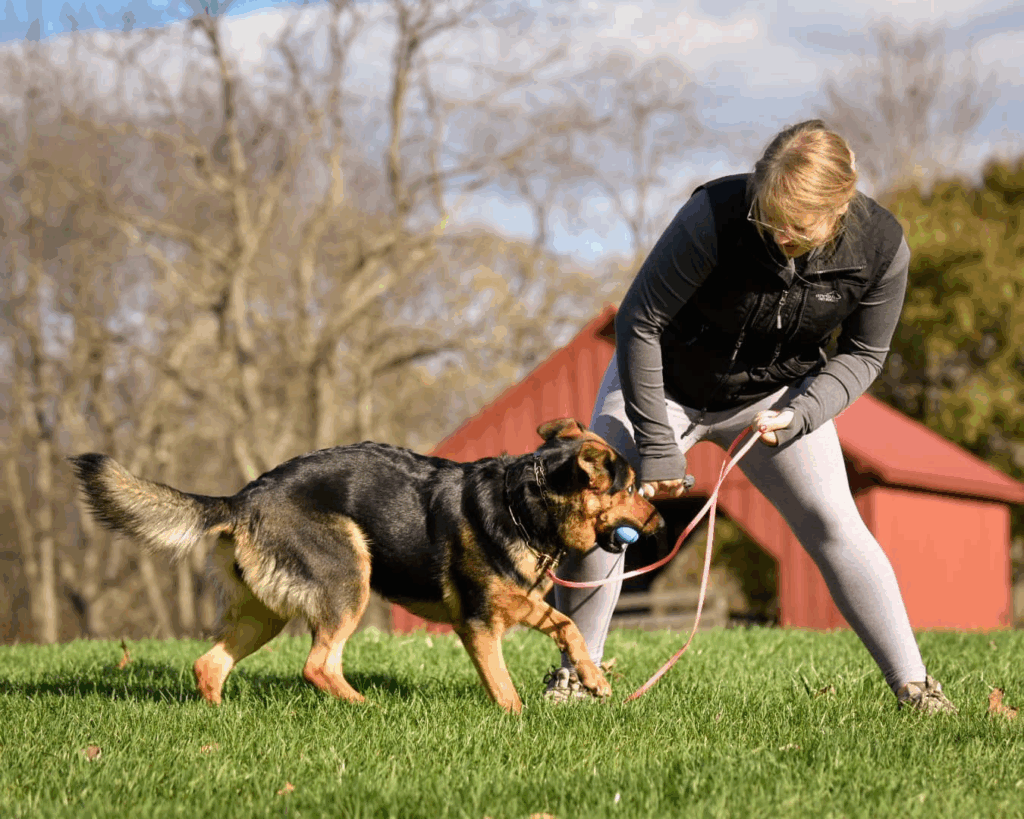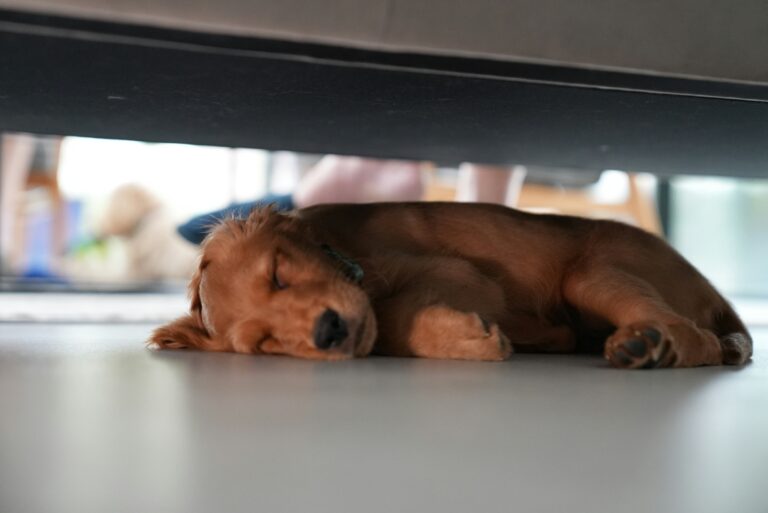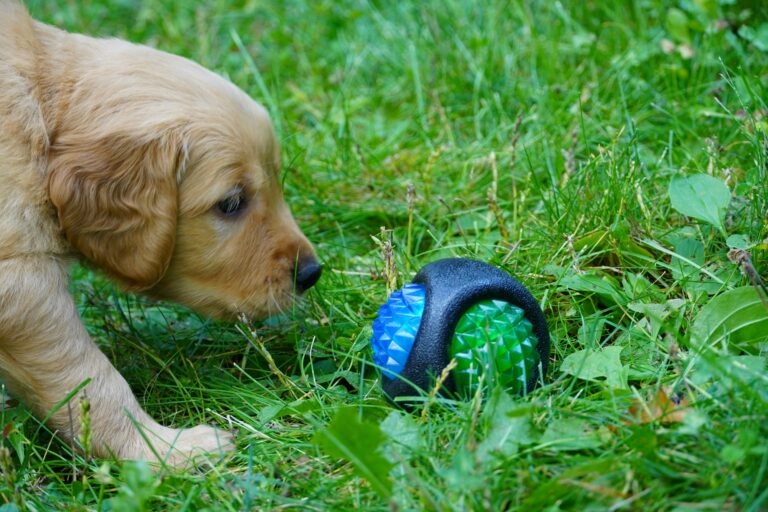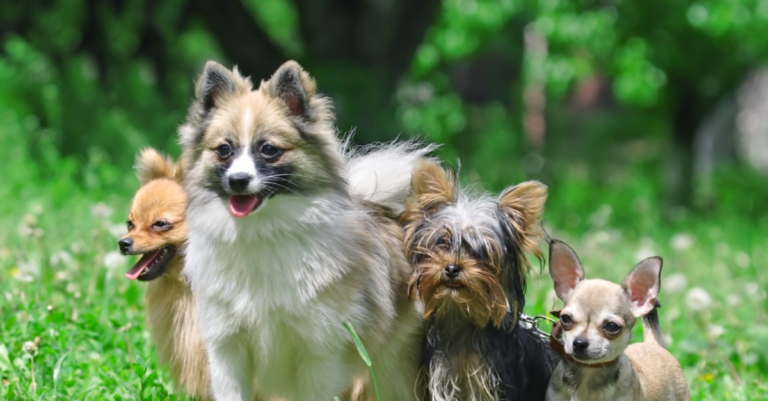Taming the tiniest of canine companions in the art of potty pad training is no small feat! In this comprehensive guide titled “Potty Pad Prodigies: Mastering the Art of Training Small Dogs to Use a Potty Pad with Ease!” we aim to ease your worries and simplify this seemingly daunting task. 🐶🏡
In the following sections, we will uncover a treasure trove of expert tips, step-by-step methods, and essential techniques that you will need to effectively train your little furry friends. From understanding your pup’s behavior to selecting the right potty pad and creating a dedicated ‘bathroom’ space, we’ll guide you every step of the way. 🐾
Stick around and uncover the secrets to making potty pad training a seamless experience, ensuring that you and your petite pooch can focus on the more enjoyable aspects of your bonding journey. With patience, persistence, and the knowledge we’ll provide, you’ll soon be a proud owner of a well-trained, potty pad-savvy pup! 🏆
Understanding the Concept of Potty Pad Training
To kick off the technical analysis, we must first thoroughly understand the concept of potty pad training. Essentially, it is a method where owners teach their small dogs to use a designated spot, in this case, a potty pad, for their bathroom needs. The primary driving force behind potty pad training is to establish a specific location for the dog to eliminate, thus ensuring cleanliness and hygiene in the home.
The Science behind Potty Pad Training
From a scientific perspective, potty pad training is based on a dog’s instinct to keep their sleeping and eating areas clean. The process involves habituation, where dogs learn to associate the potty pad with elimination. Gradually, the pad becomes a distinct zone in their mental map of the house, recognized as the only appropriate place for relieving themselves.
Selecting the Ideal Potty Pad
Before diving into the training process, it’s vital to choose the right potty pad. Various factors such as absorbency, size, and material need to be considered.
Key Factors in Potty Pad Selection
- Absorbency: An ideal potty pad should have a high absorption capacity to ensure that the urine doesn’t leak onto the floor.
- Size: The potty pad should be large enough for your dog to comfortably use. It should provide sufficient space for the dog to turn around and choose a spot.
- Material: Eco-friendly materials that are safe for your pet and the environment are recommended.
Mastering the Training Process
Once you’ve selected the perfect potty pad, the next step involves the actual training process. There are several stages to this, including introducing the pad, establishing a routine, and rewarding the dog.

Introducing the Pad
Initially, the dog might show reluctance towards using the pad. Hence, it is critical to introduce the pad in a positive light. You can do this by allowing the dog to explore the pad, possibly even playing with it initially to build familiarity.
Establishing a Routine
Consistency is key in potty pad training. Establishing a routine helps your dog understand when it’s time to use the pad. This routine can be based around meal times or even the dog’s natural bathroom schedule.
Rewarding the Dog
Rewarding your dog for using the potty pad is a fundamental part of the training process. Positive reinforcement encourages good behavior, and in this case, helps the dog associate the potty pad with rewards.
Dealing with Accidents
Even with the best training, accidents can occur. It’s crucial to handle these situations calmly to avoid confusing or scaring your dog.
Handling Accidents Positively
If your dog has an accident, it is essential to maintain a calm and constructive attitude. Negative reactions such as yelling, scolding, or physical punishment can create fear and confusion, setting back your training progress. Instead, view accidents as a natural part of the learning process. Young dogs, in particular, are still developing control over their bladders and understanding of expectations.
When an accident occurs, gently interrupt your dog if you catch them in the act by making a neutral sound to get their attention. Immediately and calmly guide them to the potty pad. If the accident has already happened, simply clean it up without giving any attention to the incident. Reinforce the positive behavior by rewarding your dog generously when they do use the pad correctly.
Positive reinforcement creates a stronger association between using the potty pad and receiving praise or treats. Over time, this consistent feedback loop helps your dog learn more quickly and reduces the chances of future accidents.
Cleaning the Accident Spot
Proper cleaning is critical when dealing with potty accidents. Dogs have a keen sense of smell, and even a faint trace of urine can encourage them to eliminate in the same spot again. Regular household cleaners may not be enough to neutralize these odors completely. It is advisable to use an enzymatic cleaner specifically designed to break down organic compounds in pet urine.

Begin by blotting up as much of the mess as possible with paper towels. Avoid rubbing the area, as this can push the urine deeper into carpets or fabrics. After removing the initial moisture, apply the enzymatic cleaner according to the manufacturer’s instructions. Allow it to sit for the recommended amount of time to ensure that all odor-causing particles are broken down.
Cleaning thoroughly not only preserves the hygiene of your living space but also helps reinforce the idea that the potty pad is the designated area for elimination. Maintaining a clean environment supports your dog’s training by removing any confusing scent markers.
Transitioning Out of Potty Pads
At some point, many pet owners wish to transition their dogs from indoor potty pads to outdoor elimination. Whether due to lifestyle changes or the dog’s growth and development, this shift requires a thoughtful and gradual approach to ensure success.
Dogs are creatures of habit, and sudden changes can create anxiety or setbacks. Therefore, the transition should be slow and deliberate. Start by placing the potty pad closer to the door your dog will eventually use to go outside. Over a few days, gradually move the pad closer and closer to the exit.
During this process, maintain the same cues and rewards system you used during indoor training. Consistency helps your dog understand that while the location is changing, the expectations remain the same. Be patient and supportive, offering plenty of encouragement and positive reinforcement as your dog adapts to the new routine.
Gradual Transition
A gradual transition is essential to help your dog adjust comfortably to outdoor elimination. Begin by placing the potty pad near the door. Over a week or two, move it outside onto a porch or patio, and eventually onto grass or soil.
Each time your dog successfully uses the pad in a new location, provide enthusiastic praise and treats. If accidents occur, simply reset a few steps back without displaying frustration. The goal is to make the new environment as familiar and rewarding as possible.
You can also carry the used potty pad outdoors for the first few times. The familiar scent will encourage your dog to eliminate in the new area. Gradually, your dog will no longer need the pad and will recognize the entire outdoors as the appropriate place to relieve themselves.
Encouraging Outdoor Elimination
Once the pad has been fully moved outside, begin encouraging your dog to eliminate directly on natural surfaces like grass or dirt. Allow your dog to sniff around and become comfortable in the outdoor environment. Be patient, especially if they seem unsure or distracted.
Timing is crucial. Take your dog outside at regular intervals, particularly after meals, naps, or play sessions. These moments are when dogs naturally need to go. When your dog eliminates outside, immediately praise them enthusiastically and offer a high-value treat.
Consistency and positive reinforcement will help solidify the association between outdoor elimination and positive experiences. Avoid rushing or forcing your dog, as creating a relaxed and supportive environment is key to long-term success.
Incorporate a verbal cue, such as “go potty,” when your dog begins to eliminate. Over time, this cue will become associated with the act itself, allowing you to encourage elimination on command when needed.
Building a Reliable Potty Routine
Establishing a consistent potty schedule is one of the most effective ways to promote reliable habits. Dogs thrive on routine, and regular opportunities to relieve themselves reduce the chances of accidents. A typical schedule might include first thing in the morning, after eating, after playing, and before bedtime.
Monitor your dog’s behavior closely for signs that they need to go, such as sniffing, circling, or heading toward the door. Respond promptly to these cues to reinforce the connection between feeling the need to eliminate and going to the appropriate spot.
In addition to scheduled potty breaks, keep track of your dog’s natural rhythms. Some dogs may need more frequent trips outside, particularly young puppies or smaller breeds with tiny bladders. Adapting the schedule to your individual dog’s needs enhances success.
Understanding Puppy Development Stages
When potty training small dogs, it is important to understand their developmental stages. Puppies under three months old have limited bladder control and may need to go out every hour. As they mature, they gradually develop the ability to hold it for longer periods.
Each milestone in your puppy’s growth can influence training progress. Teething, growth spurts, and increased mobility can cause temporary setbacks. Recognizing these phases and adjusting expectations accordingly can help maintain a positive attitude and prevent frustration.
Socialization and exposure to new environments also play a role in successful potty training. Gradually introducing your puppy to different outdoor surfaces, smells, and sounds helps build their confidence and reinforces appropriate elimination behaviors.
Dealing with Setbacks
Setbacks are a normal part of the potty training process. Life changes such as moving to a new home, the arrival of a new family member, or schedule disruptions can all impact your dog’s habits. When setbacks occur, return to basics by re-establishing a consistent routine, providing close supervision, and reinforcing desired behaviors.
Avoid labeling your dog as stubborn or difficult. Instead, view setbacks as opportunities to reinforce learning and strengthen the bond between you and your pet. A patient, understanding approach fosters trust and encourages long-term success.
If accidents become frequent despite consistent efforts, consider consulting with a veterinarian to rule out medical issues such as urinary tract infections, which can cause increased frequency or loss of control.
Potty Training Tips for Apartment Living
Training a small dog in an apartment presents unique challenges, but it is entirely achievable with some strategic adjustments. One of the key factors is creating a clearly defined potty area inside your apartment or on a balcony if available.
Use a sturdy, high-quality potty pad holder or a patch of artificial turf to mimic outdoor conditions. Be mindful of odors by regularly cleaning the potty area and using odor-neutralizing products.
Timing and supervision are even more critical in an apartment setting. Short trips outside may not always be feasible, so having a reliable indoor option ensures that your dog has access to an appropriate elimination area at all times.
Small breed dogs, in particular, can thrive in apartments when given a structured potty routine and plenty of positive reinforcement.
The Role of Crate Training in Potty Success
Crate training can be a powerful complement to potty pad training. Dogs naturally avoid soiling their sleeping areas, making crates an effective tool for encouraging bladder control and reinforcing good habits.
Select an appropriately sized crate that allows your dog to stand, turn around, and lie down comfortably but does not provide excessive space that could encourage accidents. Introduce the crate positively, using treats and praise to create a safe, comforting environment.
Use the crate strategically during times when supervision is limited, such as overnight or while running errands. Always ensure that potty breaks occur immediately before and after crating to prevent discomfort or accidents.
Crate training requires consistency and compassion. Never use the crate as a punishment, and always provide your dog with opportunities for exercise, play, and bathroom breaks throughout the day.
Signs of Potty Training Readiness
Recognizing when your small dog is ready to advance from potty pads to full outdoor pottying requires careful observation. Signs of readiness include consistently using the pad without reminders, signaling the need to go by heading toward the door, and demonstrating the ability to hold their bladder for longer periods.
Building on these skills, you can gradually phase out the use of pads while increasing outdoor trips. Maintaining a positive, encouraging environment during this transition is essential to prevent confusion or regression.
Keep in mind that each dog progresses at their own pace. Celebrate small victories and remain flexible in your training approach to support your dog’s individual learning style.
Conclusion
In conclusion, the mastery of training small dogs to use a potty pad, as discussed in “Potty Pad Prodigies,” is an art that brings about convenience, cleanliness, and harmonious living conditions. The process may appear challenging at first, but with patience, consistency, and proper reinforcement techniques, even the most stubborn of pups can become potty pad prodigies. This comprehensive guide provides pet owners with effective methods, tips, and strategies, ensuring a smoother, less stressful training experience.
Remember, each dog is unique and may require different training approaches. What works for one might not work for the other. It’s essential to stay patient and keep a positive attitude, celebrating each successful step towards potty pad proficiency. The journey may be long and sometimes frustrating, but the end result is worth it: a confident, well-behaved pup and a cleaner, odor-free home.
In a nutshell, this guide is an invaluable resource for pet owners looking to simplify their lives and enhance their bond with their furry friends. “Potty Pad Prodigies” truly encapsulates the essence of successful, stress-free small dog potty training, making it a go-to manual for all pet parents. 🐾📘



